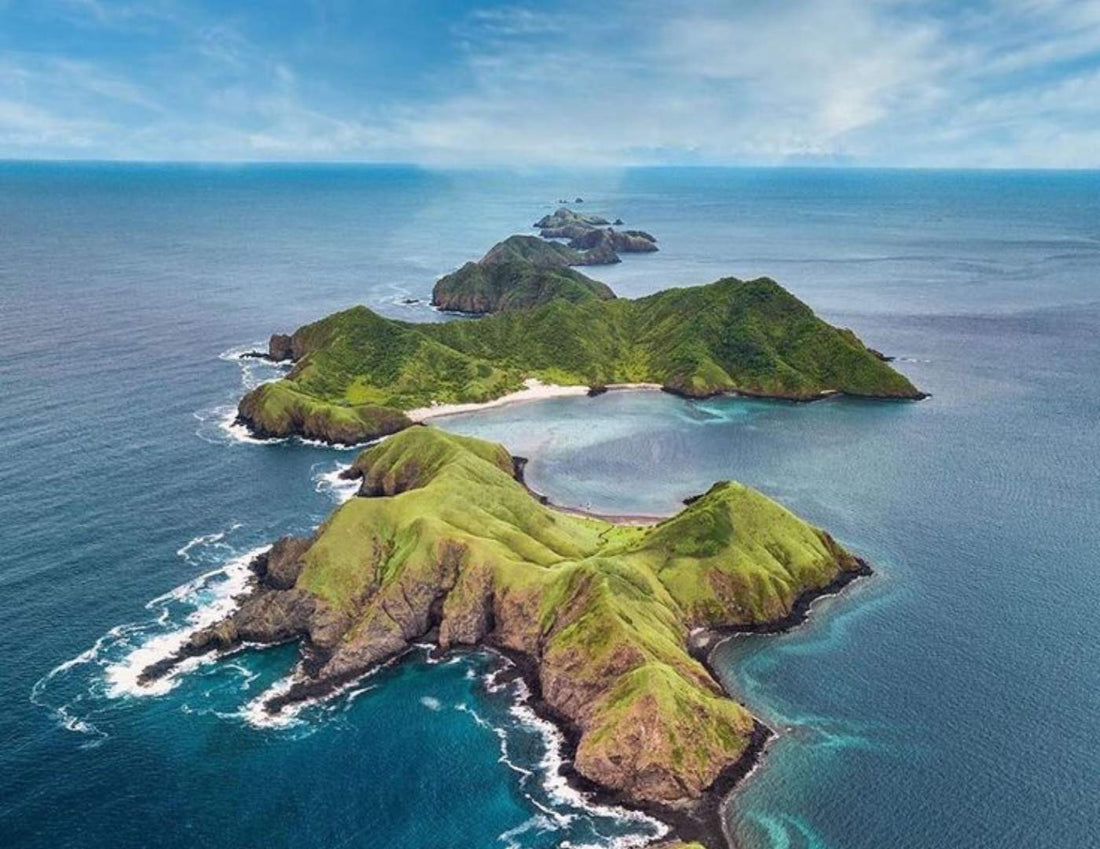
Bat Islands: A Divers' Paradise
BY NAMUBAKShare
Located in the far north of Guanacaste, the Murciélago Islands are a remote and wild archipelago that forms part of Santa Rosa National Park . This group of islands not only safeguards one of the country's greatest marine ecological treasures, but is also a dream destination for those seeking unforgettable diving adventures.
Bat Island: An unexplored corner of the Pacific
Visiting the Murciélago Islands is like traveling to another dimension. These islands, accessible only by boat from Playas del Coco or Cuajiniquil , offer a rarely seen spectacle of biodiversity. Due to their remote location, access is limited and regulated— only 35 people are allowed per day —making them a virtually untouched natural sanctuary.
The boat ride can last between 60 and 90 minutes , but it's worth every second. Along the way, it's common to see dolphins, giant manta rays, and, with luck, even whales. The excitement grows as the boat approaches San José Island , the only landing point.
World-Class Diving: The Big Scare and Black Bass
The Murciélago Islands are internationally recognized as the best diving spot in Costa Rica . Its two most iconic spots are:
- The Big Scare : Here you can experience close encounters with the majestic bull shark ( Carcharhinus leucas ), a powerful and enigmatic species that inhabits these deep waters. It's a well-known natural cleaning station, making it one of the few diving spots to see the bull shark without using bait.
- Bajo Negro : a site rich in marine life, with changing visibility, thermoclines and large schools of fish, ideal for experienced divers.
The best time to dive is between May and November , when the wind eases, visibility improves, and the water warms. However, currents can be strong and the depths can be deep (up to 30 meters), so advanced diving experience is recommended.
👉 Read more about diving in Costa Rica

A refuge for marine giants
The Bat Islands are also seasonally home to the giant oceanic manta ray ( Mobula birostris ), a vulnerable species frequently seen between May and August. Watching them move in groups while filtering plankton is a spiritual experience.
👉 Learn more about the giant oceanic manta ray

Murciélago Sector: Nature and History Viva
This sector of the Guanacaste Conservation Area (ACG) is located on the Santa Elena Peninsula and borders the Pacific Ocean and Cuajiniquil to the north. It covers more than 13,000 hectares of tropical dry forest , an area once threatened by hunting, agriculture, and livestock farming, but now undergoing an impressive natural regeneration process.
This process has allowed for the progressive restoration of its native flora and fauna, displacing introduced species such as the jaragua grass ( Hyparrhenia rufa ), once used to feed livestock. Furthermore, its coastline features coral reefs and a valuable mangrove swamp in Santa Elena Bay , essential for marine biodiversity.
Active conservation and permanent surveillance
The Murciélago Sector is one of the most active tourist areas in the Guanacaste Conservation Area . Its team of park rangers not only guides visitors but also protects the area from threats such as forest fires, logging, and illegal hunting. During the dry season (December to May), their work is key to preserving the ecosystem.
A hacienda converted into a park
The site's history is also notable. The area was known for years as Hacienda Murciélago , the property of former Nicaraguan President Anastasio Somoza Debayle. In 1980, it was expropriated by the Costa Rican government under President Rodrigo Carazo, and in 1982, officially incorporated into Santa Rosa National Park.

An experience on land and sea
While diving is the main attraction, a visit to the mainland is also breathtaking. From the crystal-clear beach of San José Island , you can walk a short trail that offers epic views of the ocean. The walk is short but breathtaking, and often ends with a snorkeling stop in waters resembling a tropical fish tank.
How to visit the Bat Islands
- Access : Only with authorized tour from Cuajiniquil or Playas del Coco.
- Ideal season : Weekdays, during dry months without strong winds.
- What to bring : Comfortable clothing, sunscreen, hydration (ideally a Namubak thermal bottle ), dry bag and appropriate footwear.
👉 This option is ideal if you want to explore the Murciélago sector without having to dive.
And for those who want to explore the underwater world, Namubak and The Clean Wave offer guided diving experiences to these islands , including encounters with bull sharks and manta rays. Prices start at $225 and include:
- Round trip boat
- 3 diving tanks
- Entrance to the National Park
- All diving equipment
- 2 Dive Masters
- Snacks, fruit, drinks and hydration
Write to us directly on our WhatsApp to check availability.
Conscious tourism in action
The Bat Islands represent what Costa Rica does best: conservation and exploration . They are the perfect example of sustainable tourism, with regulated access, low-impact practices, and a transformative experience for both visitors and the wildlife they protect.
At Namubak , we promote this kind of conscious exploration. Connecting with places like this not only transforms us as people, but also fosters a new way of traveling: one that respects, protects, and leaves a positive mark.
Conscious tourism in action
The Bat Islands represent what Costa Rica does best: conservation and exploration . They are the perfect example of sustainable tourism, with regulated access, low-impact practices, and a transformative experience for both visitors and the wildlife they protect.
At Namubak , we promote this kind of conscious exploration. Connecting with places like this not only transforms us as people, but also fosters a new way of traveling: one that respects, protects, and leaves a positive mark.


